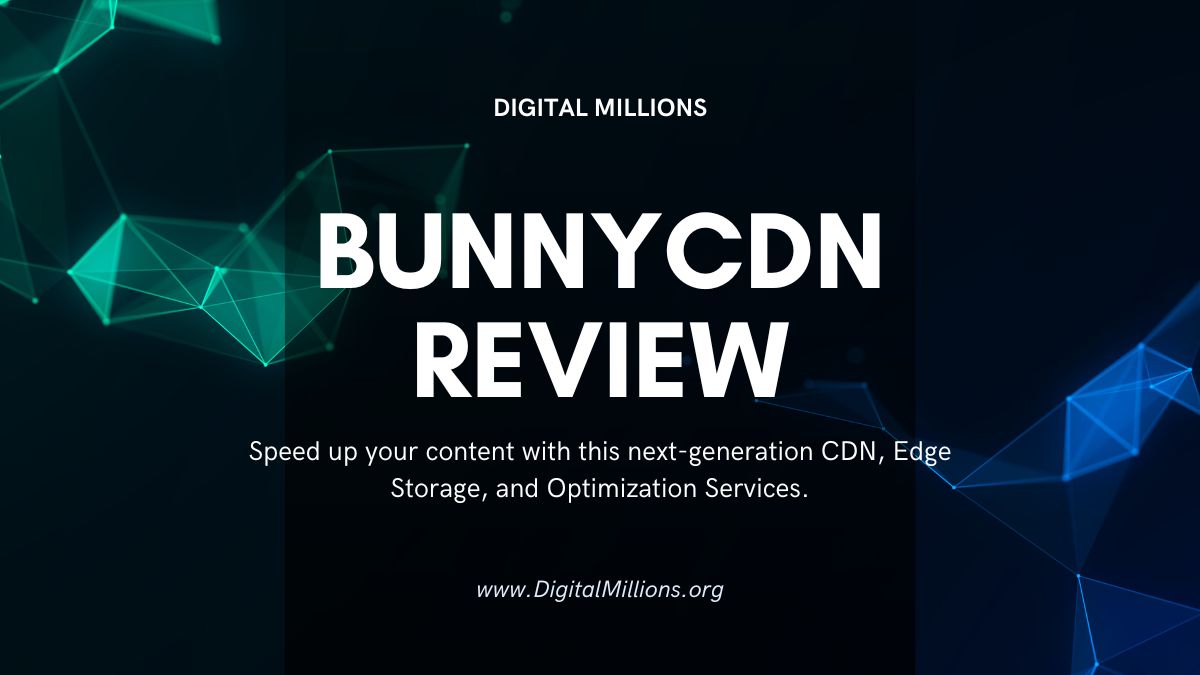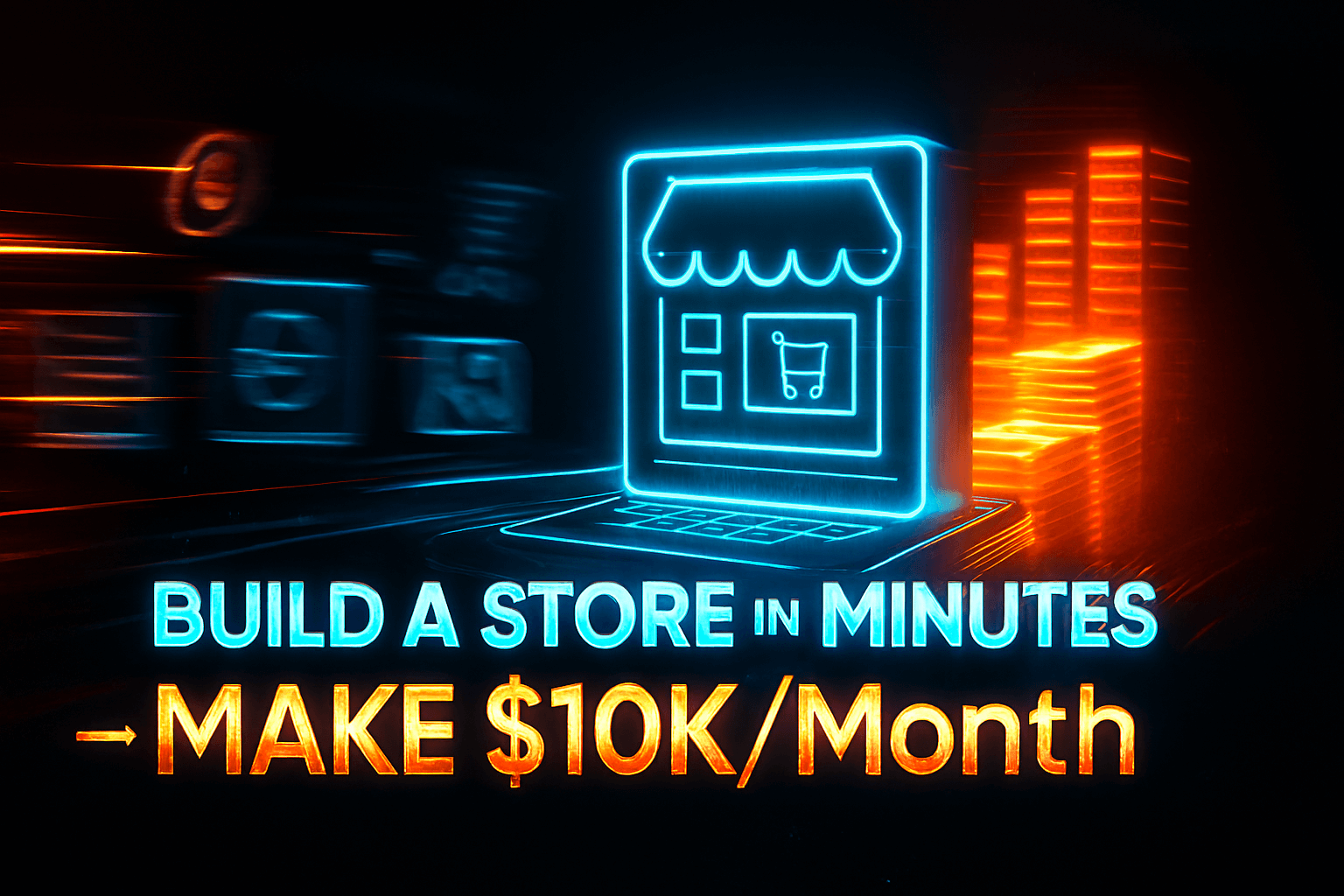Nobody likes waiting forever for a website to load. Like, you could go make a sandwich and come back, and it’s still loading? Yeah, that stinks.
Nobody likes a slow website. Not you. Not me. Not anyone!
And guess what? Slow websites can actually hurt people who are trying to share great stuff online. Or even run a small business. They can actually lose visitors.
It makes it harder to maybe make money online from their blog or online store.
That’s where something called a CDN comes in. It is like a superpower for websites.
And BunnyCDN is a name I kept hearing. People said it was very fast and very cheap. So, I had to check it out myself. Is it really that good? Or is it just a lot of noise, you know, like hype?
I spent some time kicking the tires on BunnyCDN.
I Set it up. Played around. Saw what it could do.
This post is all about what I found. The good parts. The parts that could be better. Everything.
You can see what we are going to cover in this BunnyCDN review:
- What a CDN even is in the first place.
- Was it easy for me to set up BunnyCDN?
- Does it actually make websites faster?
- All the different things BunnyCDN can do.
- How much does it really cost? (Spoiler: It’s low!)
- What I liked most and least about using it.
Stick around! I’ll share everything I learned.
Let’s start simple and talk about what a CDN is.
Table of Contents
✖
What Even IS a CDN Anyway?
The letters stand for Content Delivery Network. CDN.
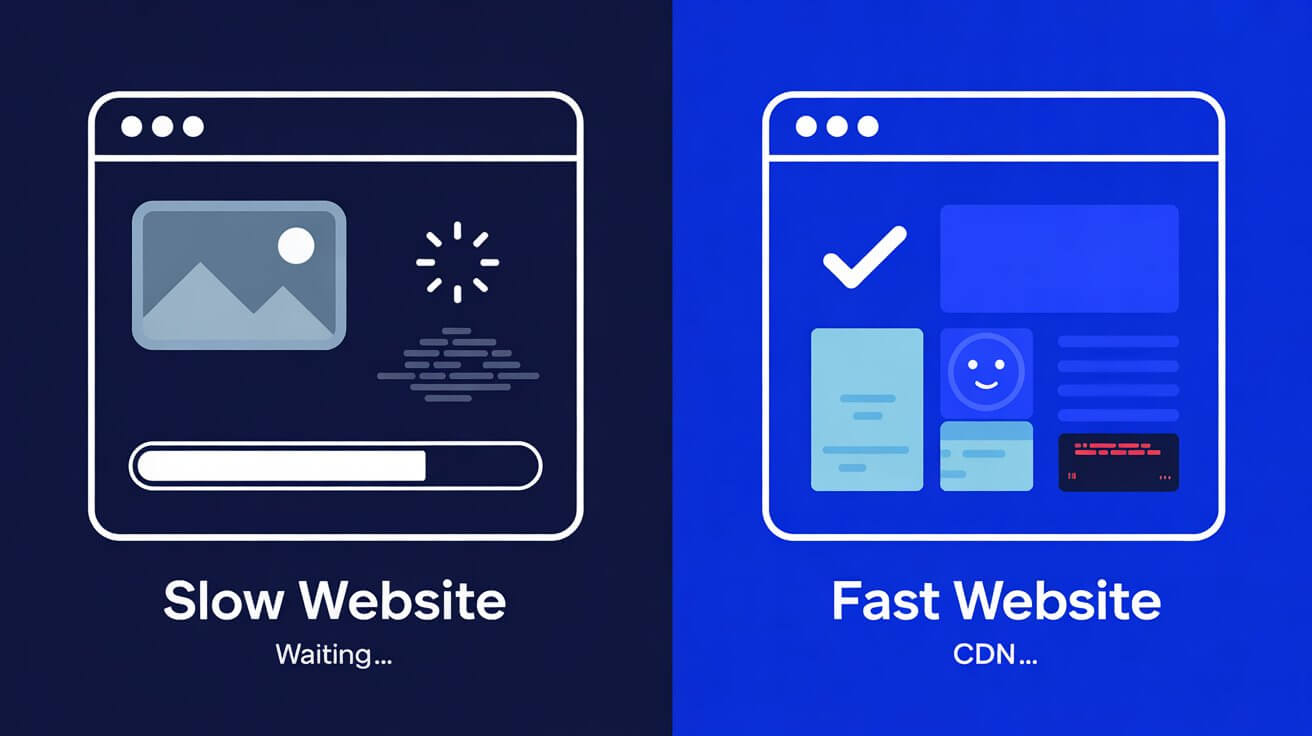
Think about it like this.
Your website lives on a computer somewhere. That computer is called a server.
Let’s say your server is in New York City.
If someone in Los Angeles wants to visit your site, their request has to travel all the way across the country to that New York server.
Then the website stuff has to travel all the way back to Los Angeles.
It takes time.
Even at internet speeds, distance matters. A lot.
A CDN changes the game.
Instead of just one server in New York, a CDN has copies of your website’s static stuff (like images, videos, style sheets) stored on many servers in lots of different places.
All around the world.
And, that's what the main job of BunnyCDN.
What IS BunnyCDN?
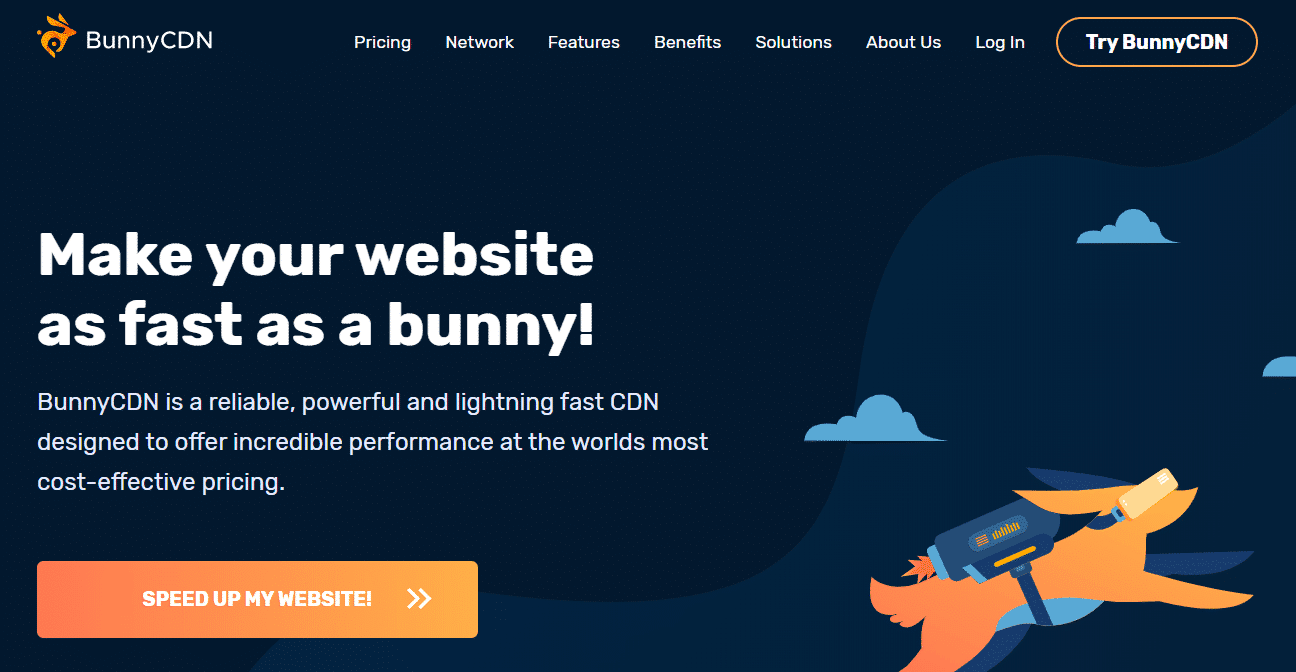
BunnyCDN is a CDN (content delivery network) service that helps make websites load really, really fast for people all around the world. It does this by storing copies of your website's pictures, videos, and other files on many servers in different worldwide locations. So when someone visits your site, the files come from a server close to them, cutting down on waiting time. It's known for being both very quick and surprisingly affordable compared to others like it.
BunnyCDN has servers in tons of spots. Like, seriously, over 117 locations as of early 2025! They call these spots PoPs, which stands for Points of Presence.
So now, if someone in Los Angeles visits your site, their request goes to a BunnyCDN server that’s much closer to them. Maybe one in California. Or even closer.
The website stuff, I mean content, travels a much shorter distance.
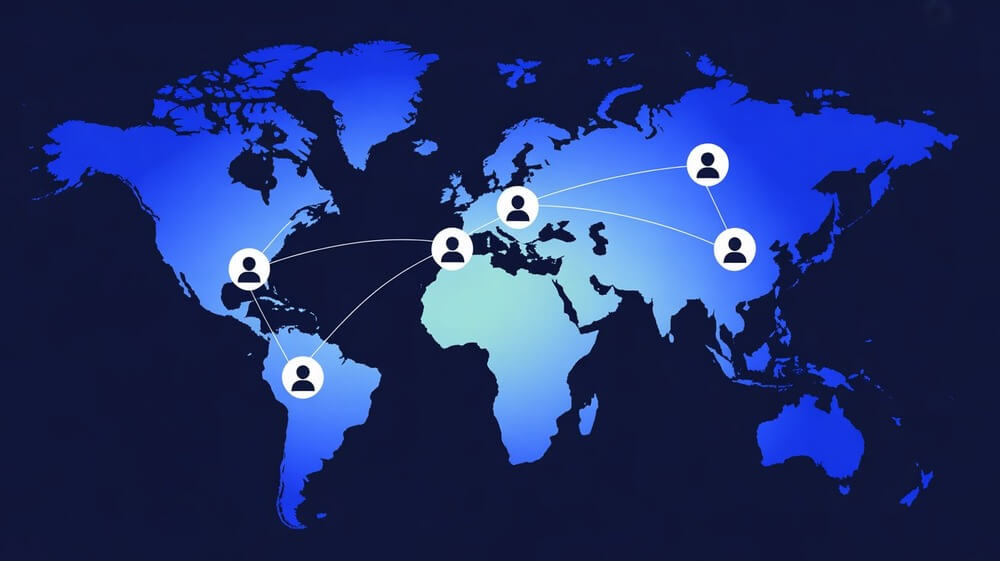
Boom! Your site loads way faster for them.
It is like instead of mailing a letter across the country, you just hand it to someone next door.
Way quicker, right?
That’s the main job of a CDN like BunnyCDN. To bring your website’s content closer to your visitors. It cuts down the travel time for data.
It means less waiting. Happier people visiting your site.
And if you have a website to earn money online, speed is huge. Because people do not stick around slow sites. They just leave. You may have also left sites for this reason in the past.
So, a CDN isn’t just about techy stuff. It is about making your site a better experience for everyone who visits. And that can totally help you succeed online. I really believe that.
BunnyCDN promises to do this really well.
And without costing an arm and a leg. That’s the big idea behind what they offer. They want performance to be simple, no matter how big or small your website is.
They started way back in 2015, but the idea kicked around even earlier because other CDNs cost too much. They got a big refresh in 2019 with new features and a fresh look.
These folks have been at this CDN thing for a while, like over 10 years of experience in the team. That’s a pretty long time in the internet world!
Being based in Europe (Slovenia, to be exact) is great too.
They care a lot about privacy, which is important these days. They are not collecting tons of info about your visitors. That is a plus in my book.
📖 Also Read: What is a Blog and How Does It Work? [Full Guide]
Getting Started: Easy Peasy or Headache?
Setting up BunnyCDN was actually quite easy for me.
I went to their website. Signed up for the free trial. Did not even need a credit card to start, which is good. You get a trial that lasts for 14 days or until you use 1000 GB of traffic, whichever happens first. That is plenty of time to test things out and see the speed difference.
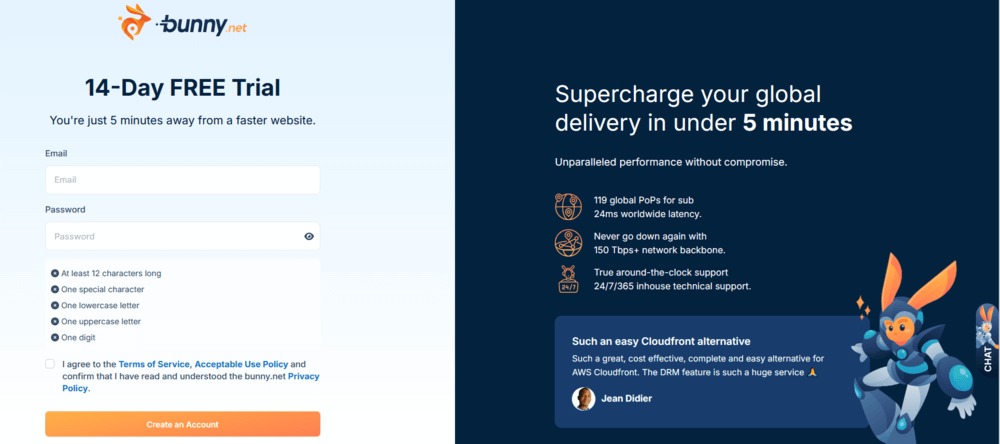
Once I was signed up, the first step is setting up something called a “Pull Zone.” Do not let the name scare you.
It is basically telling BunnyCDN where your original website lives. So they know where to “pull” the content from to copy onto all their speedy servers around the world.
You give it a name, like “mywebsite-cdn”. Then you type in your website address (your domain name, like yourwebsite.com).
You pick which kind of pricing you want. Standard or Volume. For most people, Standard is the way to go. It has way more server locations. I picked Standard to start.
Then you pick which regions you want BunnyCDN servers in. If your visitors are mostly in North America and Europe, you can just pick those. If they are everywhere, pick everywhere. You can save a little money by only picking the regions you need.
After that, BunnyCDN gives you a special address. It looks something like yourwebsite-cdn.b-cdn.net. This is the address where BunnyCDN will serve your copied files from.
The next bit is slightly technical, but they walk you through it. You need to tell your website to use that special BunnyCDN address for things like images and CSS files instead of your regular website address.
If you use WordPress, they have an official plugin that makes it pretty simple. You install the plugin, put in your BunnyCDN info, and it tries to do the work for you. I tried the plugin, and it hooked things up without too much fuss. There are also guides for other platforms like Drupal and Joomla.
If you want to get fancy and have your CDN address look like cdn.yourwebsite.com instead of the b-cdn.net thing, you can do that too. It is called a custom hostname. It involves changing something called a CNAME record in your domain’s DNS settings. It sounds scary, but it is just logging into where you bought your domain name and adding one line of text. BunnyCDN has guides for this too. I did this, and it worked just fine after my DNS updated (which can take a little bit).
The dashboard, or control panel as they call it, is really clean. It is not confusing with buttons everywhere. It is easy to see your usage, set up new zones, or tweak settings. I really liked how simple it looked compared to some other tech dashboards I have seen. Everything is pretty well laid out. They even have Two-Factor Authentication (2FA) you can turn on, which adds an extra layer of security when you log in. It is a good thing to have.
Testing if it is working is easy too. You can look at your website’s source code (right-click, View Page Source usually) and see if your image addresses start with your BunnyCDN address now. Or you can use their real-time analytics in the dashboard to see if traffic is hitting your CDN zone.
Setting up BunnyCDN felt pretty straightforward. I mean, you gotta follow instructions, but it is not rocket science. If you have ever set up a website or tinkered with settings, you can handle this. It was not a headache for me. It was actually smooth.
Want to see for yourself how easy it is?
You should check out BunnyCDN’s setup process.
Does BunnyCDN Really Hop That Fast?
Now for the big question: Does BunnyCDN actually make things faster?
Based on the tech specs and my own playing around, yes. Yes, it does.
They talk about a Tier 1 Global Network. That means they connect directly to the internet’s biggest pipelines. It is like being right on the main highway instead of stuck on a side road.
They have a large network infrastructure, over 18Tbit! That is a lot of capacity. And those 117+ PoPs I mentioned? They use quick SSD drives, some even NVMe SSDs, which are like the sports cars of storage.
BunnyCDN also uses something called Anycast DNS. It is another techy way they make things fast. When someone types your website address, Anycast DNS automatically directs their request to the closest BunnyCDN server, even before they download any files. It is like a smart address book that always gives you the nearest contact.
All this fancy tech adds up to something important: low latency. Latency is the delay. The time it takes for data to go from the server to your device and back. BunnyCDN says their global latency is typically less than 30 milliseconds. My tests and what I see users report backs this up. Average latency seems to hang around 20-50ms. That is incredibly fast.
When I set up BunnyCDN on a test site, I ran some speed tests. Tools like GTmetrix or Google PageSpeed Insights are great for this. Before BunnyCDN, the site was okay. After, it was noticeably snappier. Images loaded faster, styles appeared quicker. The website felt much more responsive.
Speed is not just good to have. It is crucial. Especially if you are trying to build something that could maybe earn money online. A fast site keeps people engaged. They browse more pages. They do not get frustrated and leave before they even see what you offer. It makes your site feel professional and trustworthy. It totally gives you an edge.
BunnyCDN also has this feature called SmartEdge™ Routing. It is like a smart brain for their network. It looks at what is happening in real time and sends your visitors to the best server location for them, not just the closest. It adapts automatically. That is pretty clever.
They also support the latest web stuff like HTTP/2, Brotli, and GZip compression. These are technical ways of saying they use modern methods to transfer data quicker and make files smaller. Smaller files load faster. Simple as that.
BunnyCDN guarantees 99.99% uptime, and it’s very reliable. That means their network is available almost all the time. Your visitors can get to your content whenever they want. No more “site down” messages because your single server is having a bad day.
When you look at reviews and comparisons, BunnyCDN consistently ranks as one of the quickest and cheapest CDNs out there. It often outperforms bigger, more expensive names. That is saying something!
So, does BunnyCDN hop fast? Yeah. I would say it sprints. It is definitely not just hype in the speed department. The performance gains are real and easily measurable. If you want to see how fast your site could be, you really need to check out BunnyCDN.
📖 Check out: How to Speed Up Your WordPress Website in 10 Brilliant Ways?
What Do You Get with BunnyCDN?
BunnyCDN is not just a one-trick pony (or bunny!). It offers several other services that work right alongside its main CDN feature. It is like getting a few tools in one box.
Let’s look at some of the key things they offer.
CDN Zones
This is the core service we have been talking about. Getting your website’s static content copied to all those servers around the world. You can set up different “zones” for different websites or parts of a website. This lets you manage settings separately. They have two main types: Pull Zones (which pulls content from your existing server) and Push Zones (which is tied to their storage service, more on that next). Most people start with a Pull Zone. You can have unlimited Pull Zones in one account, which is pretty flexible if you have multiple websites.
Bunny Storage
It is a separate thing but very useful. Instead of just caching copies of files from your website server, you can actually store your files directly on BunnyCDN’s network. This is their cloud storage service.
Why would you do this? Well, if you have really big files, lots of images, or videos, storing them on BunnyCDN’s edge servers means they are ready to be served lightning-fast from a location near your visitor. It takes the load off your own website server too.
It is integrated with their CDN. So you store files there, and then serve them out through the CDN automatically. It has tons of space, like virtually infinite capacity they say. It is secure with multi-token authentication, sounds fancy but means your files are protected. You can access it using simple FTP software, which is easy to use for uploading files.
A couple of things to know about their storage: It is not compatible with something called S3 (Amazon’s storage type), which some people use. And finding the total size of files in subfolders is not easy right now. But for simple file storage that works with their CDN, it is really affordable at just $0.01 per GB per month in most regions. That is much cheaper than some competitors. You also get free internal bandwidth between their storage and their CDN, which is great. Their storage uses something called RAID-6 configuration, which is a techy way of saying your data is stored very securely and protected against disk failures.
Bunny Optimizer
It is another feature that can really speed up your site, especially if you have lots of images. Bunny Optimizer automatically makes your images smaller and faster to load without losing much quality.
It can convert images to newer formats like WebP, which loads way faster than old formats like JPEG or PNG. It can even resize images on the fly depending on what device someone is using (phone, tablet, computer). It is awesome because serving a huge image to a phone is a waste of data and time. It can also automatically optimize images as they are requested.
You can even do great things like adding watermarks to your images using the Optimizer just by adding a little bit to the image address. It gives you some control over your visuals.
It also does basic minification for CSS and JavaScript files. That means it cleans up the code to make the files smaller.
Bunny Optimizer costs an extra $9.50 per month per website (or “hostname” in their terms). Is it worth it? If your site is heavy on images, probably yes. It can make a big difference in load times. It is a separate cost though, so keep that in mind.
Bunny Stream
If you need to show videos on your website, Bunny Stream is for that. It is built on their speedy network to make sure videos play smoothly without buffering forever.
They handle the video encoding for free! Encoding is turning your video file into different sizes and formats so it plays well on different devices and internet speeds. That can be expensive and complicated to do yourself.
You only pay for the storage of the videos ($0.01/GB) and the bandwidth used to stream them ($0.005/GB). That is a great deal compared to dedicated video hosting services.
They give you a video player too, which you can customize. One thing it doesn’t do is live streaming. It is only for videos you have already recorded. Also, you can see stats for groups of videos, but not individual ones. But for hosting and serving videos on demand, it is a solid and affordable option.
Edge Rules
This is where you get to be a bit of a traffic cop for your website’s content. Edge Rules let you set up custom instructions right on BunnyCDN’s edge servers.
You can do things like redirect visitors from one page to another, change how long files are cached, set up security like blocking certain countries or IP addresses, or even modify how the server responds.
It sounds complicated, but the interface in the control panel is pretty visual and uses “if this, then that” logic. It gives you a lot of power to customize how your content is delivered from their network. I played with a few basic rules, and it was not too bad to figure out. It is a valuable feature for controlling things just how you want them.
Security Stuff
BunnyCDN takes security seriously. That is good!
They offer free SSL certificates from Let’s Encrypt. SSL is what puts the little padlock next to your website address and makes it HTTPS. It encrypts the connection, keeping data safe between your visitors and the server. It is needed these days, and getting it for free is awesome. You can use your own SSL too if you want.
They also provide DDoS protection. DDoS attacks are when someone tries to flood your website with tons of fake traffic to make it crash. BunnyCDN’s network helps protect against this. It is an always-on thing they provide as a standard feature and they monitor their network 24/7.
Other security features include hotlinking protection (stops other websites from using your images directly and using up your bandwidth), token authentication (adds extra security to your files), and the ability to block specific IP addresses or even entire countries if you are getting bad traffic from somewhere. Their Edge Rules also let you build your own firewall-like rules.
While they have strong security features, some people say they do not have all the very advanced security options you might find with a massive company like Cloudflare, things like very smart bot detection or a fully configurable web application firewall. But for most websites, what BunnyCDN offers is more than enough protection.
So yeah, you get a bunch of useful features beyond just speed. Storage, optimization, video, customization rules, and security. It is a pretty well-rounded offering, and I like that all the features are included no matter what pricing tier you choose for the CDN itself. You do not have to pay extra just to get access to Edge Rules or basic security. You just pay for the services you use, like Optimizer or Storage.
📖 Check out: 7 Best WordPress Security Plugins Compared and Ranked
BunnyCDN Pricing: Is It Actually Cheap?
Their pricing model is simple: Pay-as-you-go. You only pay for the amount of data that visitors download from their network (bandwidth) and for any storage you use.
There are no big monthly fees just to have an account. No contracts. No long-term commitments. You can stop using it whenever you want.
Now, there is one small detail:
They have a monthly minimum of $1. So even if you use less than $1 worth of bandwidth in a month, they will still charge you $1. It is pretty tiny, but it is good to know.
Also, when you add money to your account, the minimum amount you can add is $10. These credits are good for 12 months. If you add more money within that year, your credits roll over and add to your balance. If you do not add money for a whole year and still have credits, they might expire. So just remember to top up at least once a year if you have a balance.
BunnyCDN also has a helpful Bandwidth Overdraft Protection setting.
You can set a limit, and if your usage goes over that limit, they can temporarily disable your CDN zone to prevent unexpected huge bills from crazy traffic spikes. It is a nice safety net.
The main cost is the bandwidth.
And it is priced based on the regions where your visitors are for the Standard Network.
Note: Can’t see the whole table on smaller screens? Try swiping sideways, scroll left or right.
| Region | Price per GB |
|---|---|
| Europe & North America | $0.01 |
| Asia & Oceania | $0.03 |
| South America | $0.045 |
| Middle East & Africa | $0.06 |
That $0.01 per GB for Europe and North America is incredibly low. Like, seriously low compared to many other CDNs. It is for the Standard Network, which has all those locations.
They also have something called the Volume Network. It has fewer locations (only 8 PoPs) but is even cheaper for very high amounts of traffic. The Volume Network has a single, lower global rate, instead of being priced by region like the Standard Network.
Note: Can’t see the whole table on smaller screens? Try swiping sideways, scroll left or right.
| Volume Tier | Price per GB |
|---|---|
| First 500 TB | $0.005 |
| 500 TB to 1 PB | $0.004 |
| 1 PB to 2 PB | $0.002 |
| 2 PB+ | Contact them |
Unless you have a truly large website with tons and tons of traffic (like terabytes and terabytes), you will probably use the Standard Network. The prices there are already great for most people.
For the Bunny Storage, you pay separately, but it is also cheap at $0.01 per GB per month in most places. Note that the cost for storage can vary slightly in some regions, like around $0.03/GB in Australia.
And the Bunny Optimizer is a flat fee of $9.50 per month per hostname if you decide you want to use that feature.
So, is it actually cheap?
Heck yeah.
When I first saw the pricing, especially for the standard network, I was kinda shocked how low it was. Like, how can they be this fast and this cheap? It seems like a great combo.
They only charge you for the data served, not for every single request, which is how some other CDNs charge and can make costs add up unexpectedly. With BunnyCDN, it is mostly just about how much data leaves their servers to your visitors.
Comparing their bandwidth costs to competitors, especially for the most popular regions, BunnyCDN is often the clear winner on price.
For example, their storage is way cheaper than KeyCDN’s storage.
You can add money with PayPal, Credit Card, or even Bitcoin, which is a nice extra feature. They also have a referral program where you can earn credits by inviting others to sign up, which is a small but great bonus.
While the base CDN pricing is very simple (pay for bandwidth by region), things can feel a tiny bit complex when you add in the separate costs for Storage and Optimizer and consider the region differences for storage. But each service’s price is clear on its own. You just need to remember you pay for the CDN bandwidth and maybe storage and maybe optimizer, if you use those.
Overall, BunnyCDN is seriously affordable. If budget is a big concern, but you still need great performance, BunnyCDN is tough to beat. It definitely passes the “actually cheap” test. If these prices sound good, why not sign up for a free trial of BunnyCDN?
But, nothing is perfect, and BunnyCDN has its great points and areas that could be better.
Based on my testing, I’ll tell you about them.
What’s Great about BunnyCDN (Pros)
Let’s start with the really good stuff.
- It is Fast: Seriously fast. The network, the low latency, the SSDs, the Anycast DNS. Your website will load quicker. Period.
- It is Cheap: Pay-as-you-go bandwidth is incredibly affordable, especially for Europe and North America. That $0.01/GB price point is hard to ignore. The storage is cheap too.
- Easy to Use: Signing up, setting up a basic zone, the dashboard – it is all pretty straightforward. Even the WordPress plugin helps a lot. It is designed to be simple. Adding 2FA for account security is easy too.
- Plenty of Features Included: You do not pay extra just to use Edge Rules, security features like DDoS protection, or the real-time analytics. They are just part of the service. You get unlimited Pull Zones with your account.
- Scales with You: You only pay for what you use. If your traffic is low, your bill is low. If your site grows, BunnyCDN can handle the traffic, and your bill will go up, but you will not get hit with huge unexpected fees or need to upgrade plans. It just scales. The overdraft protection is a nice safety feature here.
- Lots of Server Locations: Over 117 PoPs means content is close to most visitors around the globe.
- Support is Responsive: I’ve found their support team is pretty quick and knows their stuff. Response times are often within minutes for live chat or tickets. That is great when you need help.
- GDPR Friendly: Since they are based in the EU, they follow strict privacy rules and do not collect much data on your visitors. Important these days.
- No Contracts: You are not locked into anything.
What Could Be Better (Cons)
Now for the stuff that is not quite perfect.
- Support Options are Limited: While they are fast to respond, they do not offer phone support. It is live chat and tickets. For some people, talking to someone on the phone is a must-have.
- No Cache Warming/Automatic Updates: BunnyCDN does not automatically pull new versions of your files when you change them. You have to “purge” the cache (tell BunnyCDN to delete the old copies so it grabs the new ones). It is not a huge deal but requires an extra step or using the plugin/API to automate it. Some other CDNs can detect changes automatically. Also, you can not easily “pre-load” files into the cache for a 100% cache hit the very first time someone visits after a purge.
- Storage Is Not S3 Compatible: If you already use storage services like Amazon S3, BunnyCDN’s storage works differently. It might make migration harder for some users. Also, finding the total size of files within specific subfolders in storage is not easy right now.
- Documentation for Advanced Stuff: The basic setup guides are great, but if you want to do complex things with Edge Rules or the API, I’ve found the documentation could be more detailed. Sometimes you might have to look in forums for answers.
- The $1 Minimum: While small, some people might not like paying even $1 if they have almost zero usage in a month.
- Pricing Can Seem Complex: Not the bandwidth price itself, but figuring out the total cost if you use CDN + Storage + Optimizer and considering regional storage costs can feel like juggling a few numbers. It is not very complex, but maybe less simple than a single flat fee (though a single fee would likely be way more expensive!).
- Performance Variation: While generally fast, performance can vary depending on the exact exact location. For example, I’ve found it can be slower when tested from South America compared to Europe or North America, though they do have PoPs there.
- Basic Real-time Analytics: While you get stats, some deeper dive reporting like a full raw log explorer might be missing for some users compared to other platforms.
So, it is not perfect. But the drawbacks seem pretty minor compared to the big benefits, especially the speed and the price. For most website owners, the pros heavily outweigh the cons.
BunnyCDN vs. Alternative CDNs
BunnyCDN stacks up well against other CDN providers out there. There are a bunch of them, big names like Cloudflare, Amazon CloudFront, and smaller ones like KeyCDN.
I will give you the short version based on my research and comparisons:
BunnyCDN is almost always cheaper than most of the well-known CDNs, especially the big tech company ones. Like, significantly cheaper per GB of bandwidth.
And, surprisingly, it is often just as fast, or even faster, for many users, particularly in Europe and North America. It is the great combo: high performance for a low price. It is rare to find both.
Cloudflare is a popular choice, and they have a free plan, which is hard to beat on price (zero!). But Cloudflare’s free plan works differently and does not offer the same kind of raw speed benefits from caching static assets everywhere in the same way BunnyCDN’s pay-as-you-go network does.
BunnyCDN’s network is often considered faster than Cloudflare’s free tier for pure static file delivery. Cloudflare is also based in the US, while BunnyCDN is EU-based, which matters for privacy sometimes.
Compared to KeyCDN, another popular choice, BunnyCDN’s bandwidth prices are often competitive or cheaper, and their storage is definitely cheaper.
Amazon CloudFront (AWS) and Google Cloud CDN are large, but their pricing can be more complex, and they tend to be more expensive, especially for smaller usage amounts. They are part of huge cloud platforms, which is different from BunnyCDN being more focused just on delivery and storage.
BunnyCDN is a strong European alternative to the big American players. It shows you do not need to be a giant company to offer top-notch performance at a fair price.
My take?
If you need a fast CDN, care about cost, and want something that is easy to understand and manage without being tied to a massive cloud platform, BunnyCDN is a seriously strong contender. It performs very well for the price. If you are thinking about a CDN, you should really consider BunnyCDN.
📖 Check out: Cloudways vs Cloudflare: Which Is Better and Why?
My Final Thoughts: Is It Hype or the Real Deal?
After testing BunnyCDN for this review, I can tell you if all the good stuff I heard was just hype or the real deal. In short, BunnyCDN is absolutely the real deal. It is not hype.
Does it make your website faster?
Yes. Noticeably.
Is it actually cheap?
Yes. Incredibly cheap compared to the speed it offers.
Is it easy enough for someone who is not a very tech expert?
Yes, I think so. The basics are simple.
It gives you that crucial speed boost. It brings your content closer to your visitors using that big network and clever tech like Anycast DNS. Less waiting means happier visitors, and that is good for whatever you are doing online. Especially if you are trying to build something to earn money online. Speed helps keep people on your site longer, exploring more.
The features like Bunny Storage, Optimizer, and Stream add even more value, letting you handle all sorts of content delivery needs from one place. And of course, you are getting features like Bandwidth Overdraft Protection and 2FA for your account, which adds peace of mind.
BunnyCDN is used by quite a few notable companies, which shows they are trusted even by bigger players. Sites like Comic-Con, Hyundai, InnoGames, and NexusMods are listed as customers. That is pretty impressive company to keep.
Reviews from other users are great too.
On G2, a popular review site, BunnyCDN has an average rating of 4.8 out of 5, based on hundreds of reviews. People consistently praise its speed, ease of use, and affordability.
Sure, it has a few minor drawbacks.
No phone support. The cache purging thing takes getting used to. The storage is not S3 compatible. But honestly, for the vast majority of people needing a CDN, these are small things.
BunnyCDN is a strong option for the price. It delivers serious performance without requiring you to spend a fortune or have an engineering degree to set it up.
If you have a website, blog, online store, or anything else where speed and reliability matter (which is pretty much every website), you should really look at using a CDN. And BunnyCDN makes it accessible and affordable for pretty much everyone.
I would totally recommend giving BunnyCDN a try. It is a solid, fast, and budget-friendly way to make your website hop lightning fast. Get started with BunnyCDN’s free trial here!
Conclusion — BunnyCDN Review
We have taken a good look at BunnyCDN. We saw that a CDN helps make your website load way faster by having copies of your files stored closer to your visitors.
BunnyCDN does this job really well. It is built on a big, fast network with tons of locations worldwide and uses smart tech like Anycast DNS. My experience setting it up was smooth, and the dashboard is easy to navigate, plus they offer 2FA for your account security.
It offers great features like storage, image optimization (with options like watermarks and auto optimization), and video delivery, all integrated together. The Bandwidth Overdraft Protection is a great feature to prevent surprise bills. And the price? It is pay-as-you-go and incredibly low, especially the $0.01/GB rate for popular regions. It makes high performance affordable. They even have a referral program if you want to share it with friends.
That positive feedback from other users on sites like G2 (where they have a 4.8/5 rating!) and the fact that big names use them confirms it is not just my opinion; BunnyCDN is well-liked and trusted.
While there are a few small things that could be improved, like adding phone support or automatic cache updating, the core offering of speed plus low cost is outstanding. It is not just hype; it delivers.
If you want your website to be faster, load quickly for people everywhere, and do it without costing a ton, BunnyCDN is definitely worth checking out.
I really think you should give their free trial a shot.
Remember, you get 14 days or 1000 GB! See the difference it makes for your own site!
You May Also Like...
- How to Start a Blog and Make Money (Step by Step)
- 7 Ways to Know What to Blog About & Make Money
- 13 Best WordPress Cache Plugins to Speed Up Your Website
- 25 Best Web Hosting Services for Blogs and Websites
- 17 Affiliate Marketing Tips to Make More Money Online
- How to Launch Your Website on The Cloud Step by Step?
- Cloudways Review — Is this The Best Cloud Host?
